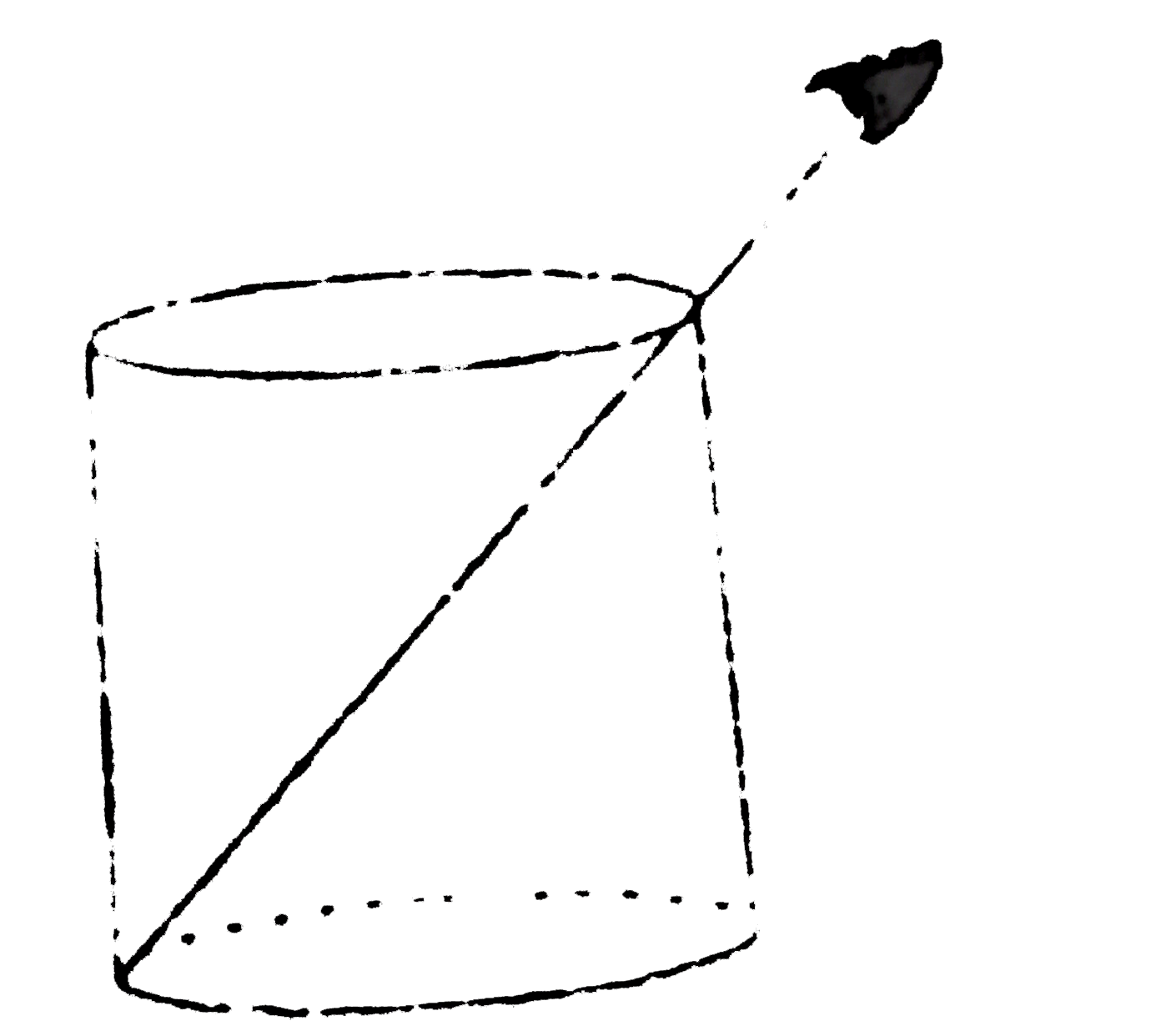A beaker is completely filled with water at 4∘C. It will overflow if
heated above 4∘C
cooled below 4∘C
both heated and cooled above and below 4∘C respectively
None of the above
The correct Answer is:C
To solve the question, we need to understand the behavior of water at different temperatures, particularly around the temperature of 4°C, where its density is at a maximum.
1. Understanding Water Density at 4°C:
- Water has a unique property where its density is highest at 4°C. At this temperature, the volume occupied by a given mass of water is at its minimum.
2. Effect of Heating Water:
- When water is heated above 4°C, its density decreases. Since the mass of water remains constant, a decrease in density leads to an increase in volume (using the relationship Mass=Density×Volume).
- As the volume increases, the water will start to overflow from the beaker.
3. Effect of Cooling Water:
- Conversely, if the water is cooled below 4°C, the density also decreases. Again, with constant mass, a decrease in density results in an increase in volume.
- This increase in volume will also cause the water to overflow from the beaker.
4. Conclusion:
- Therefore, whether the water is heated above 4°C or cooled below 4°C, it will overflow from the beaker.
- The correct answer is option 3: "both heated and cooled above and below 4°C respectively."
Final Answer:
The beaker will overflow if the water is either heated above 4°C or cooled below 4°C. Thus, the correct option is option 3.
---
- Water has a unique property where its density is highest at 4°C. At this temperature, the volume occupied by a given mass of water is at its minimum.
- When water is heated above 4°C, its density decreases. Since the mass of water remains constant, a decrease in density leads to an increase in volume (using the relationship Mass=Density×Volume).
- As the volume increases, the water will start to overflow from the beaker.
- Conversely, if the water is cooled below 4°C, the density also decreases. Again, with constant mass, a decrease in density results in an increase in volume.
- This increase in volume will also cause the water to overflow from the beaker.
- Therefore, whether the water is heated above 4°C or cooled below 4°C, it will overflow from the beaker.
- The correct answer is option 3: "both heated and cooled above and below 4°C respectively."
The beaker will overflow if the water is either heated above 4°C or cooled below 4°C. Thus, the correct option is option 3.
Topper's Solved these Questions
- THERMOMETRY THERMAL EXPANSION AND KINETIC THEORY OF GASESBOOK - DC PANDEY ENGLISHCHAPTER - THERMOMETRY THERMAL EXPANSION AND KINETIC THEORY OF GASESEXERCISE - Check point 14.3
20 Videos
- THERMOMETRY THERMAL EXPANSION AND KINETIC THEORY OF GASESBOOK - DC PANDEY ENGLISHCHAPTER - THERMOMETRY THERMAL EXPANSION AND KINETIC THEORY OF GASESEXERCISE - Check point 14.4
25 Videos
- THERMOMETRY THERMAL EXPANSION AND KINETIC THEORY OF GASESBOOK - DC PANDEY ENGLISHCHAPTER - THERMOMETRY THERMAL EXPANSION AND KINETIC THEORY OF GASESEXERCISE - Check point 14.1
10 Videos
- SUPERPOSITION OF WAVESBOOK - DC PANDEY ENGLISHCHAPTER - SUPERPOSITION OF WAVESEXERCISE - Level 2 Subjective
8 Videos
- THERMOMETRY,THERMAL EXPANSION & KINETIC THEORY OF GASESBOOK - DC PANDEY ENGLISHCHAPTER - THERMOMETRY,THERMAL EXPANSION & KINETIC THEORY OF GASESEXERCISE - Level 2 Subjective
9 Videos
Similar Questions

The pressure at C is
View SolutionA conical vessel of radius 6 cm and height 8 cm is completely filled with water. a sphere is lowered into the water and its size is such that when it touches the the sides, it just immersed. what fraction of water overflows.
View SolutionAssertion: A glass of water is filled at 4∘C. Water will overflow, if temperature is increased or decreased. (Ignore expansion of glass).
Reason: Density of water is minimum at 4∘C.
View SolutionA conical vessel of radius 6 cm and height 8 cm is completely filled with water. A sphere is lowered into the water and its size is such that when it touches the sides it is just immersed. What fraction of water overflows ?
View SolutionCoefficient of linear expansion of a vessel completely filled with Hg is 1×10−5/”∘C. If there is no overflow of Hg on heating the vessel, then coefficient of cubical expansion of Hg is
View SolutionA flask of volume 103 cc is completely filled with mercury at 0∘C The coefficient of cubical expansion of mercury is 180×10−6/∘C and heat of glass is 40×10−6/∘C. If the flask in now placed in boiling water at 100∘C how much mercury will overflow?
View SolutionA glass beaker has diameter 4cm wide at the bottom. An observer observes the edge of bottom when beaker is empty as shown in figure. When the beaker is completely filled with liquid of refractive index n=√5/2, he can just see the centre of bottom, then the height of glass beaker is :

View SolutionA glass beaker is placed partially filled with water in a sink it has a mass of 390 gm and an interior volume of 500cm2 when water starts filling the sink, it is found that if beaker is less than half full it will float but if it is more than half full it remains on the bottom of the sink as the water rises to its rim, what is the density of the material of which the beaker is made?
View SolutionWhy a glass bottle completely filled with water and tightly closed at room temperature is likely to burst when kept in the freezer of a refrigerator.
View SolutionA closed cubical box is completely filled with water and is accelerated horizontally towards right with an acceleration a. The resultant normal force by the water on the top of the box.
View Solution
